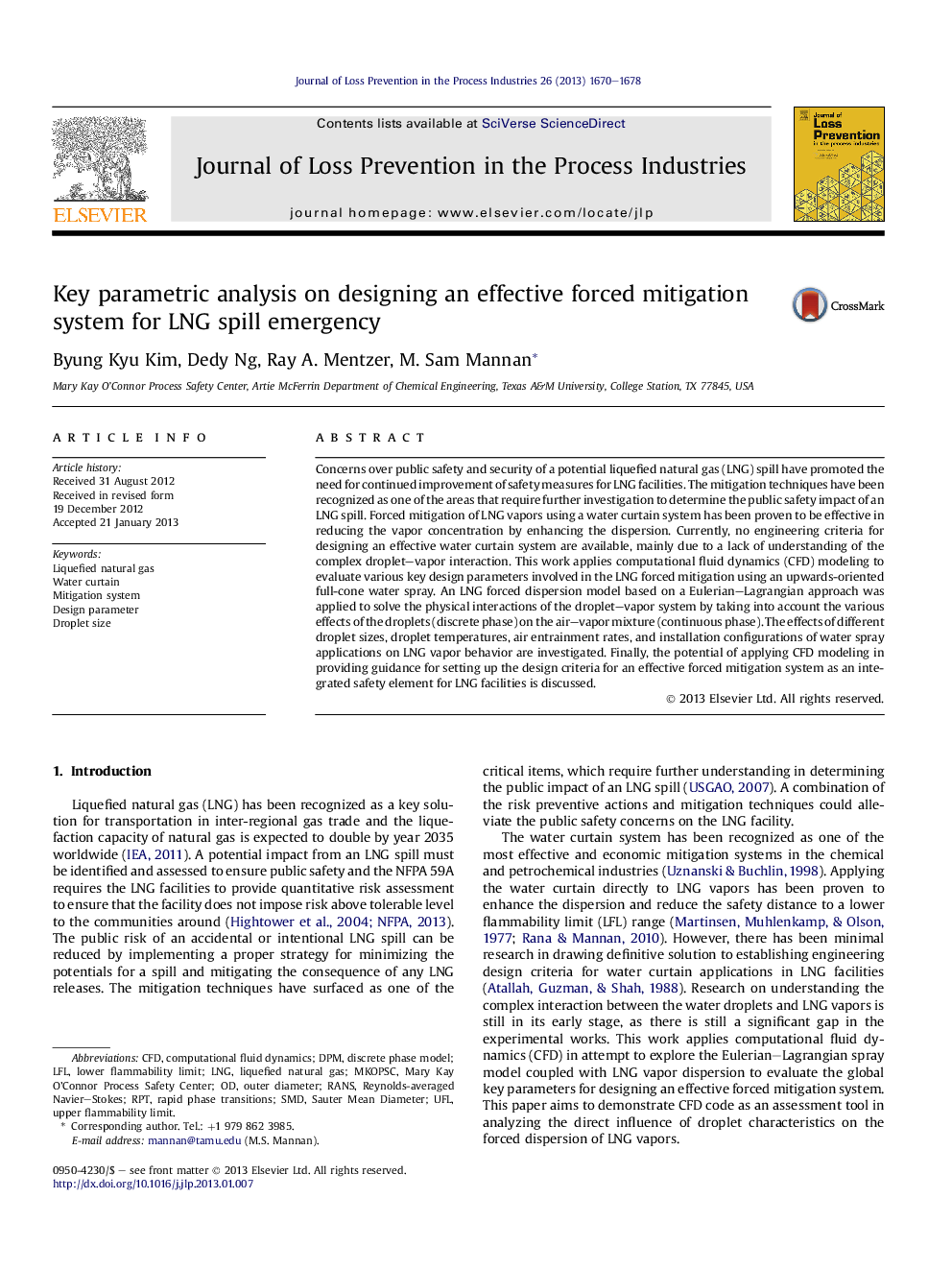| Article ID | Journal | Published Year | Pages | File Type |
|---|---|---|---|---|
| 586354 | Journal of Loss Prevention in the Process Industries | 2013 | 9 Pages |
Concerns over public safety and security of a potential liquefied natural gas (LNG) spill have promoted the need for continued improvement of safety measures for LNG facilities. The mitigation techniques have been recognized as one of the areas that require further investigation to determine the public safety impact of an LNG spill. Forced mitigation of LNG vapors using a water curtain system has been proven to be effective in reducing the vapor concentration by enhancing the dispersion. Currently, no engineering criteria for designing an effective water curtain system are available, mainly due to a lack of understanding of the complex droplet–vapor interaction. This work applies computational fluid dynamics (CFD) modeling to evaluate various key design parameters involved in the LNG forced mitigation using an upwards-oriented full-cone water spray. An LNG forced dispersion model based on a Eulerian–Lagrangian approach was applied to solve the physical interactions of the droplet–vapor system by taking into account the various effects of the droplets (discrete phase) on the air–vapor mixture (continuous phase). The effects of different droplet sizes, droplet temperatures, air entrainment rates, and installation configurations of water spray applications on LNG vapor behavior are investigated. Finally, the potential of applying CFD modeling in providing guidance for setting up the design criteria for an effective forced mitigation system as an integrated safety element for LNG facilities is discussed.
► Continued improvement of safety measures for LNG facilities. ► Forced mitigation of LNG vapors using a water curtain system. ► Application of CFD modeling to evaluate key design parameters.
